Different architectural features seen in Kachchiwatta ancient temple.
Hi my fellow Architecture lovers,
Greetings from Sri Lanka. How are you guys? I hope you are having fun with your loved ones this weekend. Today's Sunday is my only day off during the week. Therefore, I always try to spend that relaxing day productively. Meanwhile, I am also keeping an eye on the happiness of the family members. In the morning, I left for the ancient temple of Kachchiwatta in Magalla to offer a vow to Goddess Patthini. Many devotees believe that there are miracles in that temple. Therefore, many types of fruits are sold daily because they are offered to God. Devotees believe that a hope in the heart of a person who offers fruit bowls to God with full faith and utmost faith will be fulfilled. Therefore, a large number of people visit the temple every day. So after completing our puja and worshiping, the architectural elements and other details of the temple were also observed.
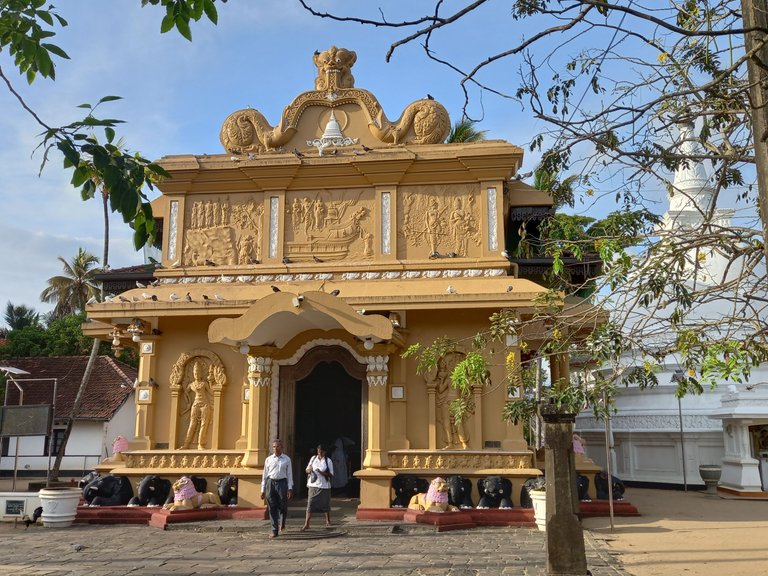
The ancient temple of Kachchiwatta is also known as Kachchiwatta Deepaduttamaramaya. After going about 2 kilometers along the Matara road from Galle city, you can reach the Kachchiwatta ancient Temple. After entering the temple gate, the first thing you see is the temple building, which is similar in shape to the Devinuwara Sri Utpalavanna Vishnu temple. The traditional Buddhist symbols of the devil and the two dragons are displayed at the top. But I am curious as to why there are no separate places for the sun and the moon here.
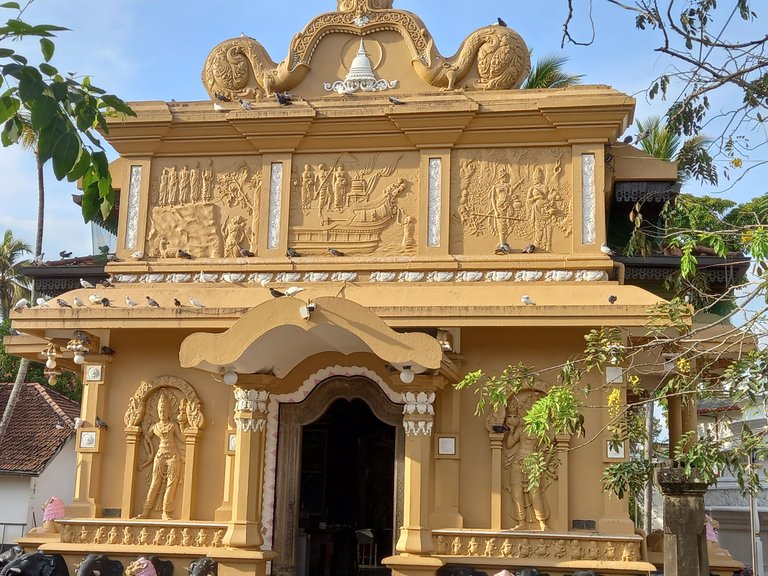
Buddhist carvings, signs and designs can be seen on the outer walls and towers of other temples. But on the upper wall of the Kachchiwatta temple are carved three events that are very important to Sri Lankan Buddhist genealogy. It is a unique architectural change. Mihidu Rahat preached Buddhism to King Devanampiyatissa from Mihintale Rock, Sanghamitta brought a Bodhi tree branch from the sea to Sri Lanka in a boat and Prince Danta and Princess Hemamala brought Buddha's tooth relic to Sri Lanka. The carvings of swans are painted white. Two deities are sculpted on either side of the entrance gate to protect the temple. This historical temple has three gates to enter and exit the Buddha House.
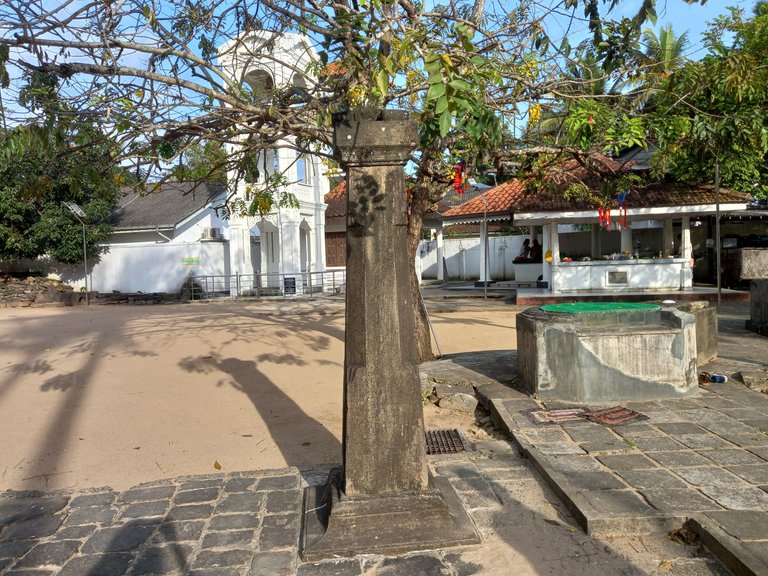
The entrance was paved with symmetrical black stones. It didn't look like an old temple, so I looked around a bit to find a suitable proof of an ancient temple. There you can see the stone pillar built during the reign of Polonnaruwa. Although the stone pillar was thoroughly explored to find out the time of construction and who built it, no information was found. There were only a few fine carvings on the upper part of the stone pillar.
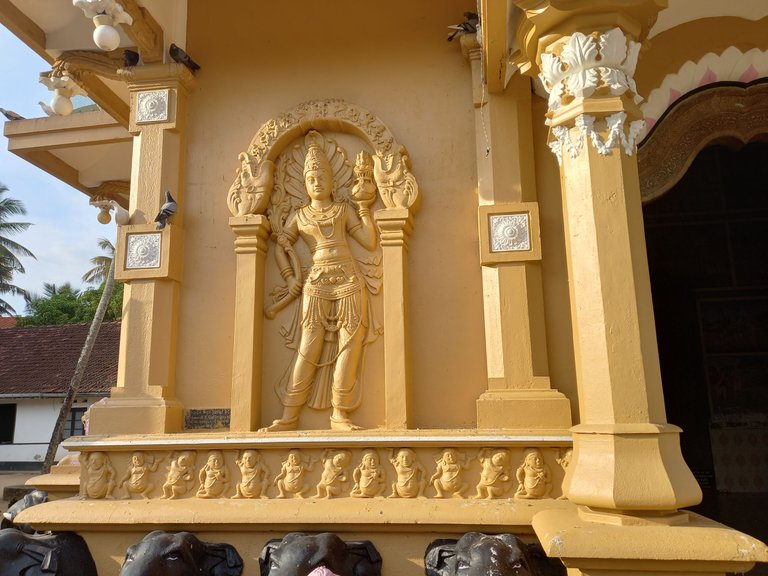
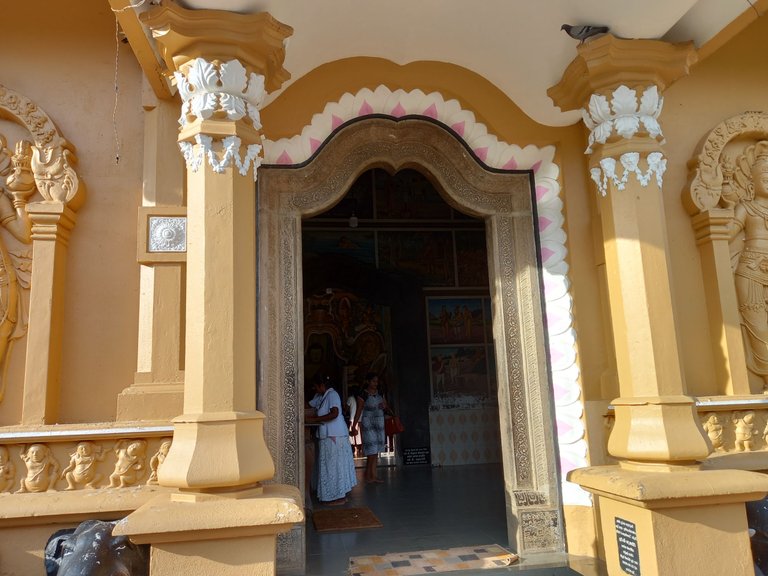
The walls around the Buddha house are painted with a light orange color. White color has also been added. It is a nice color combination. The fact that elephants' tails have been harvested in the lowest part confirms the safety of the Buddha house. There were continued carvings of the demon that people believed lived below the ground. Idols are also guarded by dragons. A weapon similar to the boomerang used by the Australian aborigines was held in one hand of the deity and a pot full of palm flowers in the other hand. The pillars are white in color and have lotus flower carvings. The entrance door frame is amazingly crafted from solid wood. Its shape is interesting. The shape of the pillars is also designed in an attractive way.
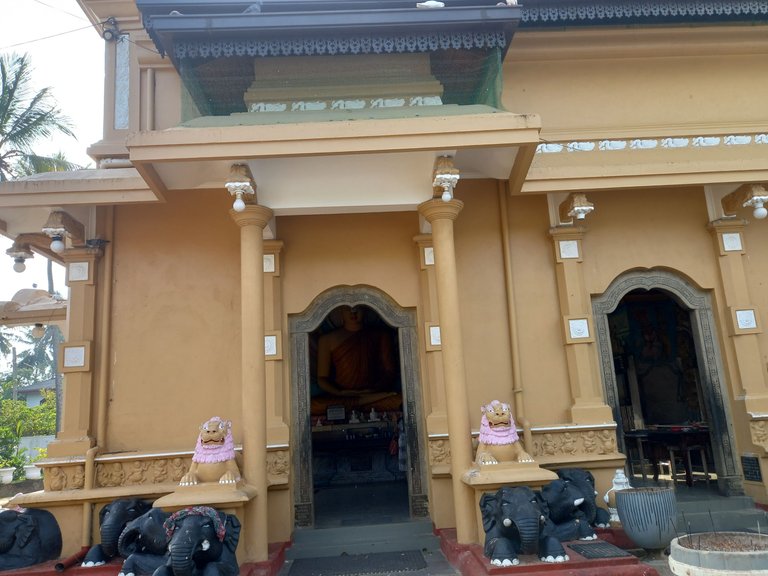 | 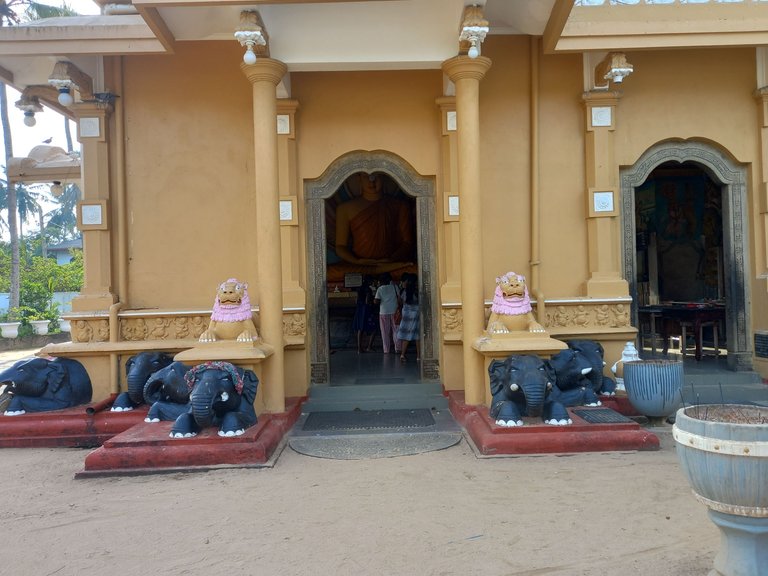 |
|---|
I went to a side entrance to the Buddha house of the Kachchiwatta ancient temple to observe the architectural elements that can be seen there. Above the elephant sculptures, two lion sculptures were seen on either side of the entrance. In addition to that, circular shaped pillars can also be seen.
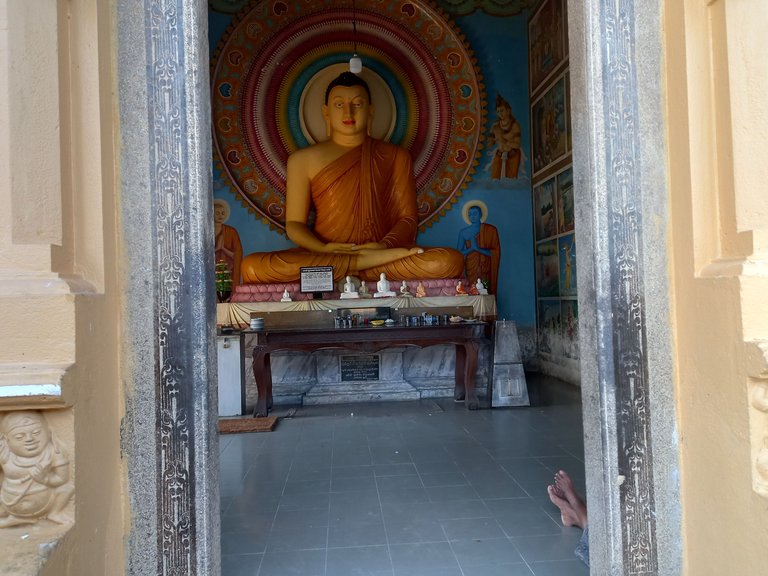
The first Buddha statue can be seen after entering the temple. There were old Buddhist carvings at the entrance. The floor is covered with tiles. Mural paintings were drawn on both sides of the Buddha statue.
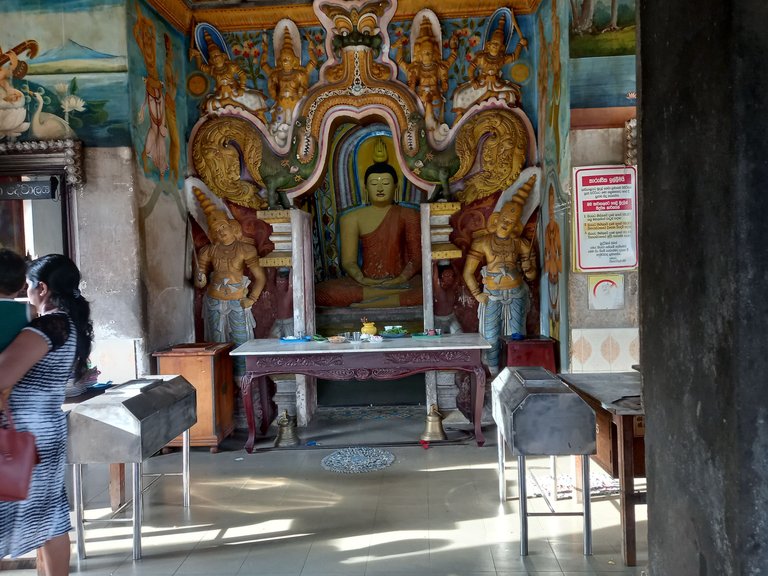
Another attractive Buddha statue can be seen in the middle of the part dedicated to Sri Skanda and Sri Vishnu in the Buddha House. In front of the Buddha statue were the carvings, designs and paintings found in other Buddhist shrines.
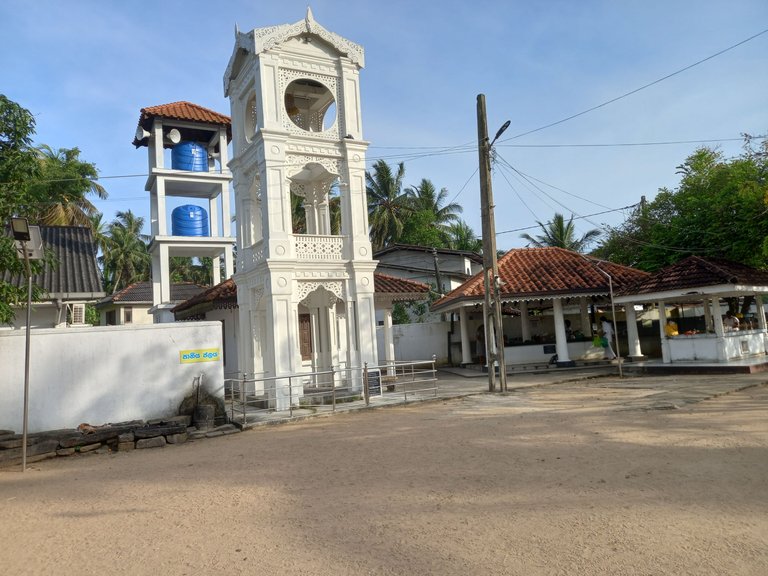
Dutch architectural features could be seen in several temples I visited recently. It may be in a small part, if not in the entire temple itself. Buddhist architectural forms mixed with Dutch architecture can be seen at the place where the bell of the Kachchiwatta temple rests. Different styles are seen even in its pillars.
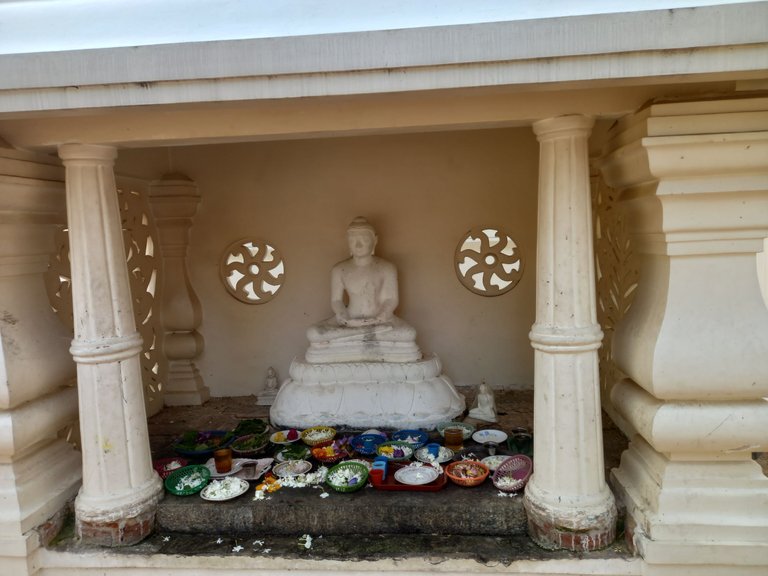
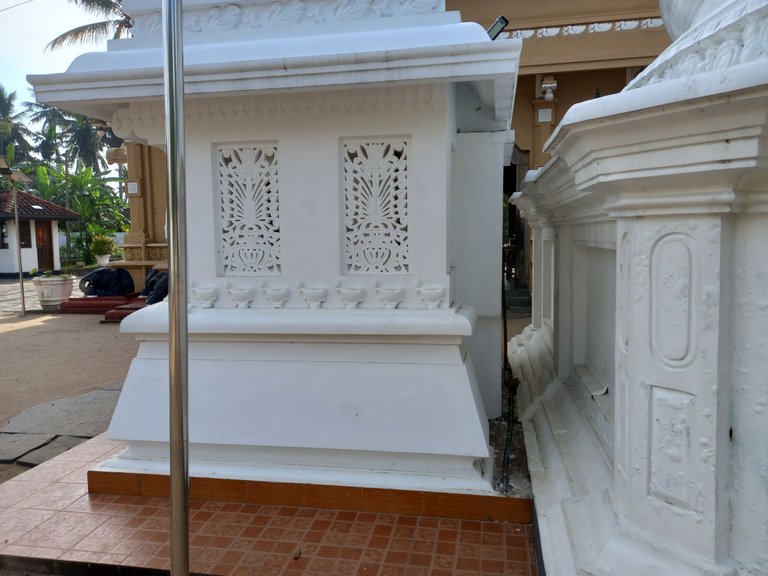 | 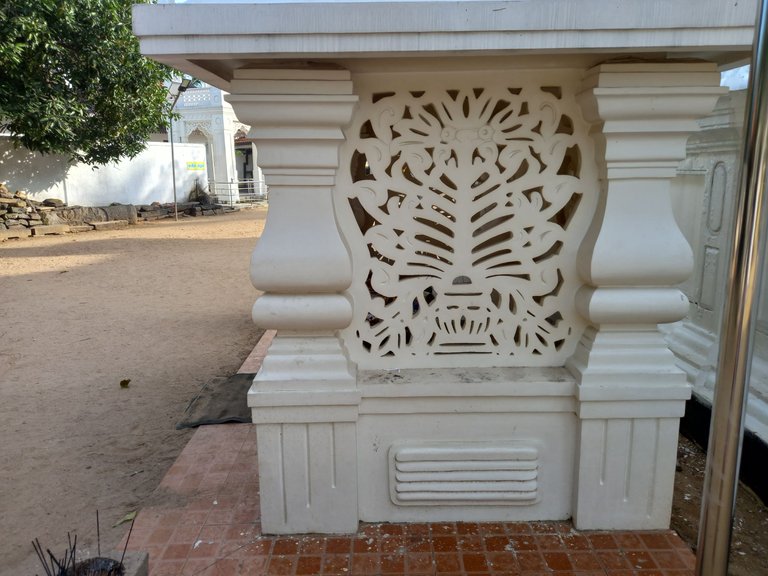 |
|---|
Around the Stupa of Kachchiwatta Temple, several small flower offering booths can be seen. A Buddha image is placed inside it to show the combination of Buddhism. These flower offering booths are constructed using various and attractive designs.
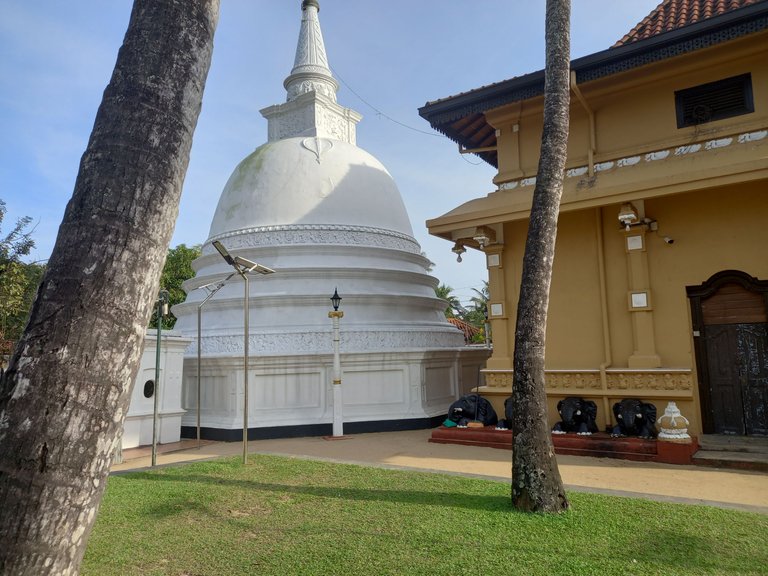 | 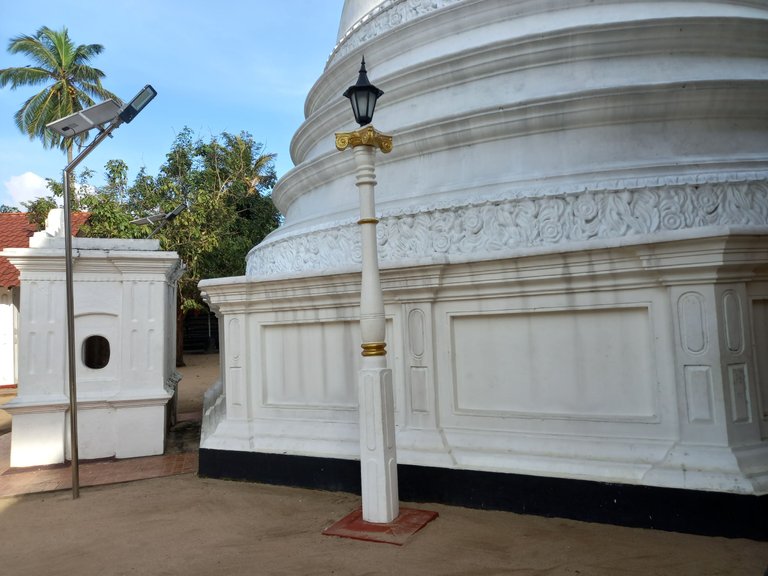 |
|---|---|
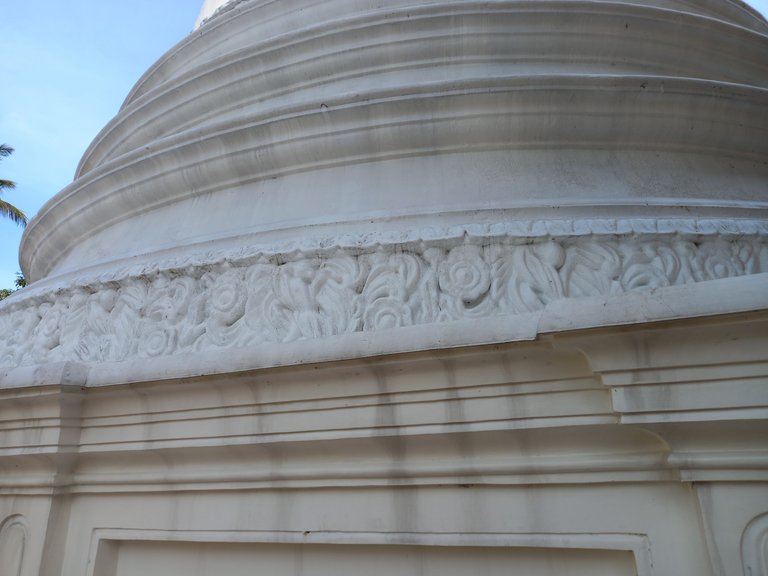 | 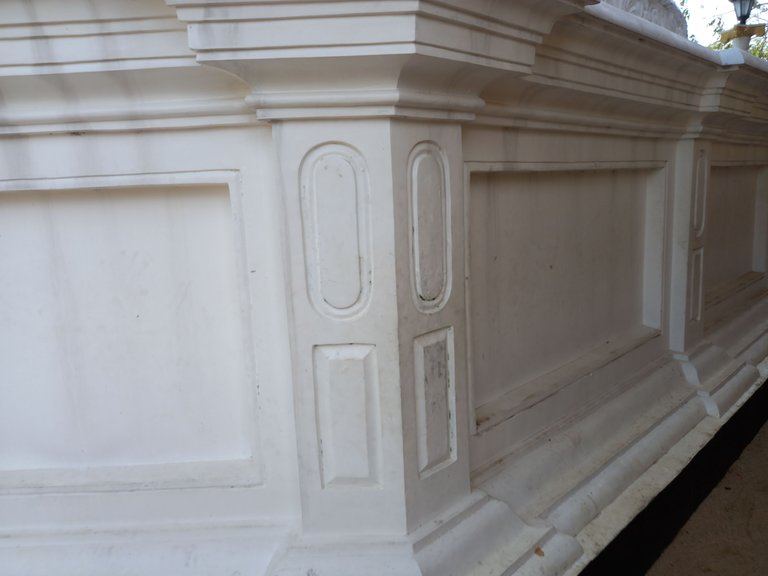 |
The Stupa of the Kachchiwatta temple was observed after that. The Stupa of any temple is a place that exhibits unique architectural features. Although each stupa looks the same, the shape, designs and carvings differ from each other. It is said that this is an ancient stupa, although it has been painted white recently and looks fresh.
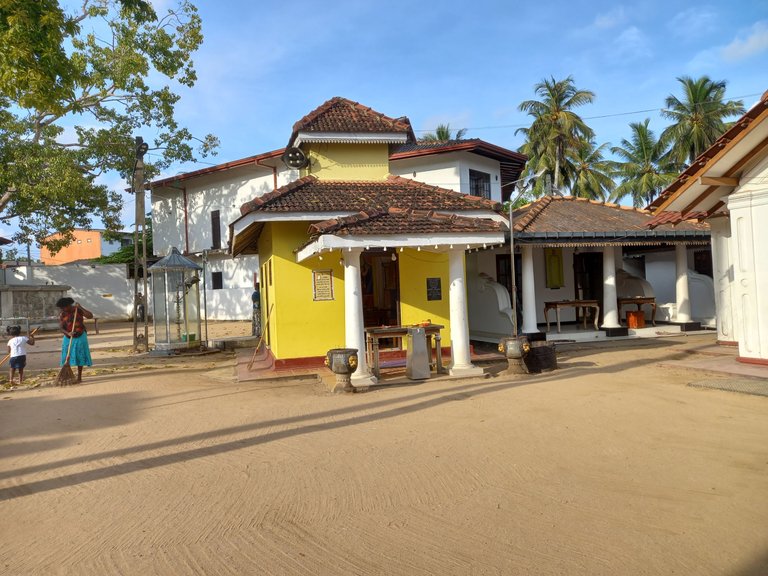
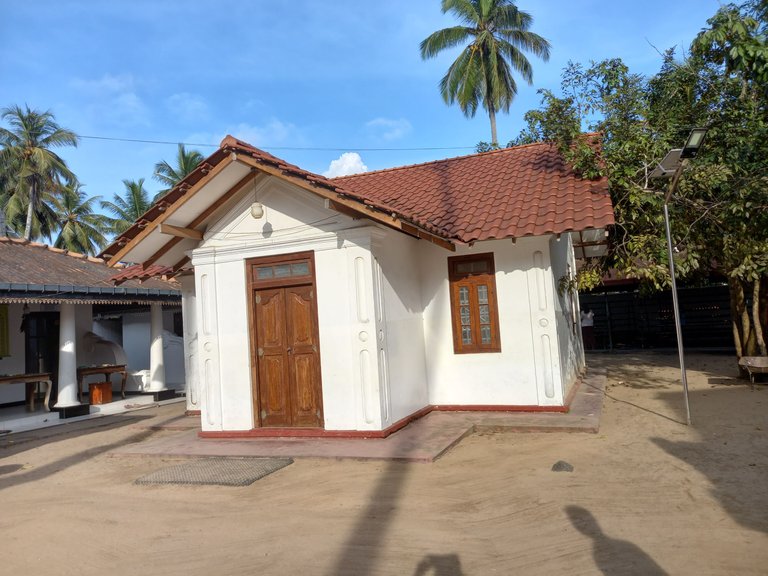
Buildings have been constructed for the Hindu gods on the grounds of the ancient temple of Kachchiwatta. The yellow building is the place of Pattini Devi where we performed fruit pooja. Traditional craftsmanship appears to have been followed, though no distinctive architectural features are included.
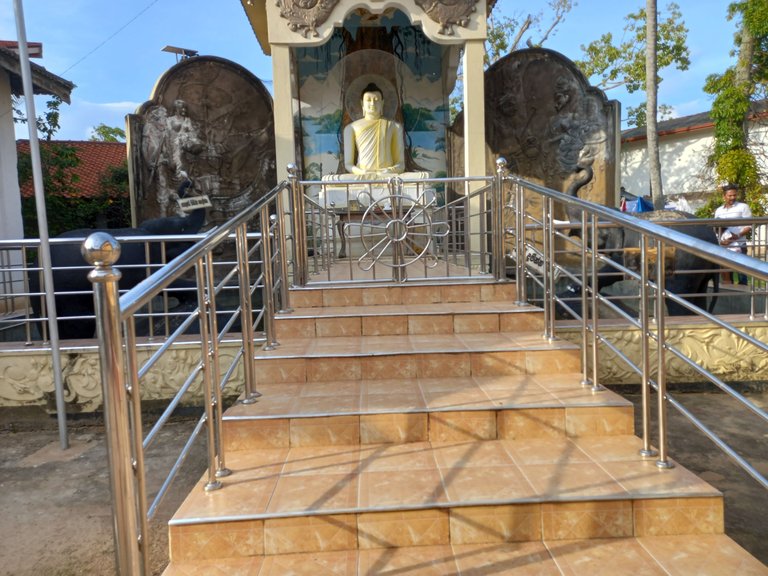
A beautifully crafted Buddha statue can also be seen in the land outside the Buddha House. The statue is protected by an iron fence. You can see that Dharma logo is created on the gate. The Buddha statue is built on a small pond.
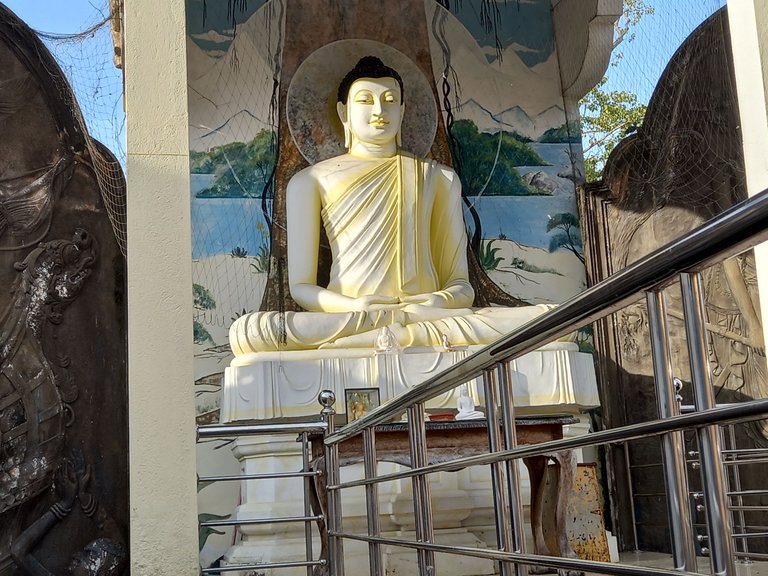
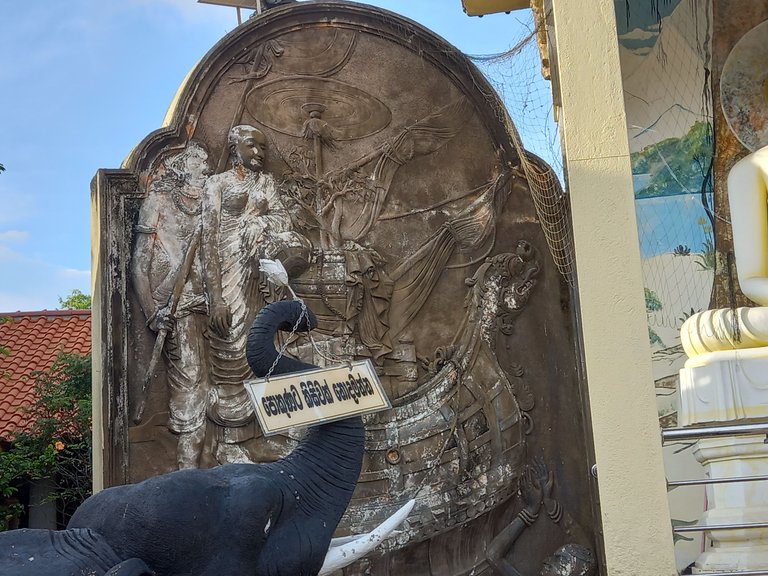
On the back of both sides of the Buddha statue, important Buddhist historical events of Sri Lanka are carved. Sanghamitta Thera carrying the Sri Maha Bodhi bud from India is depicted for the first time overland to Sri Lanka.
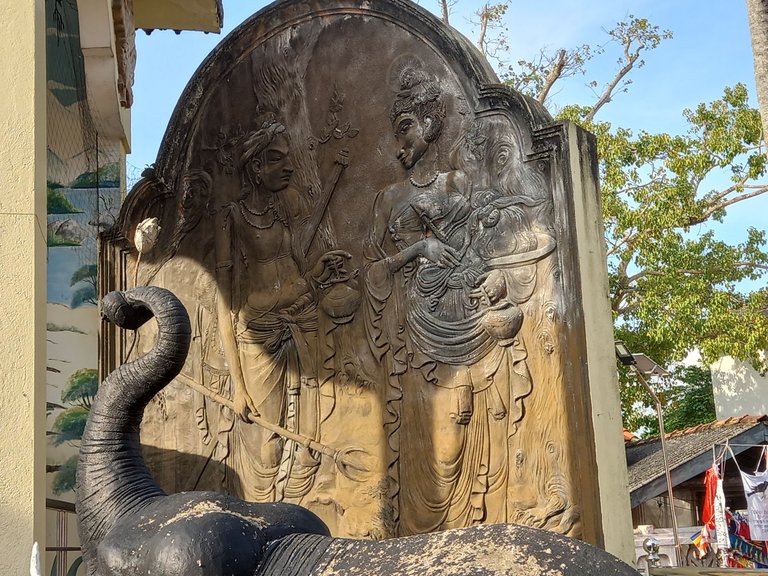
By now you must have realized that in Sri Lankan Buddhist architecture, more attention is given to carvings and murals. Notices have been displayed not to give coins or food items as pet fish live in the pond.
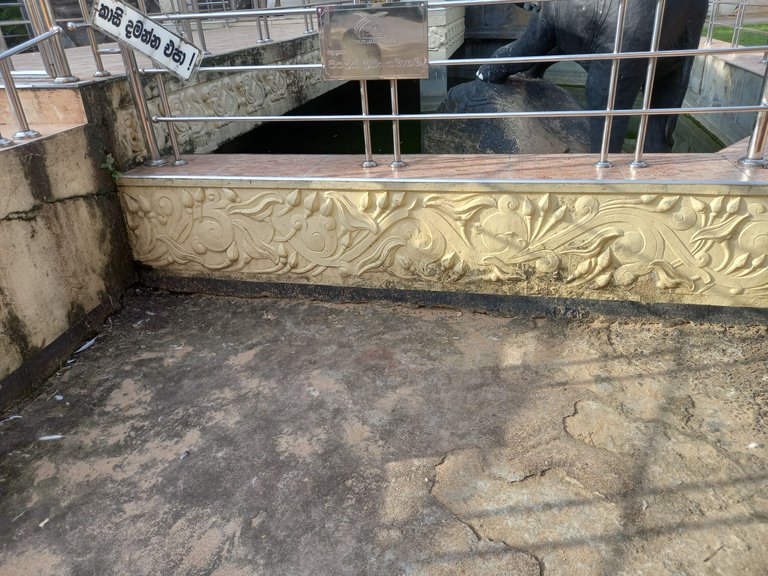
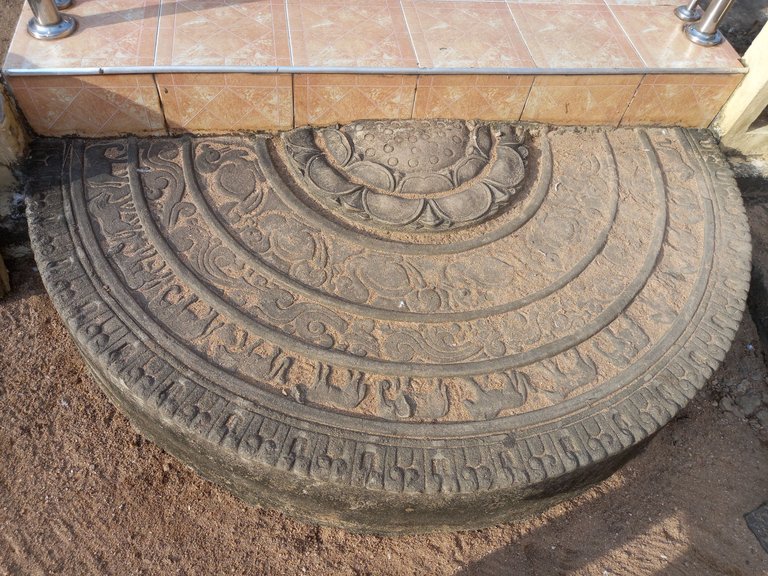
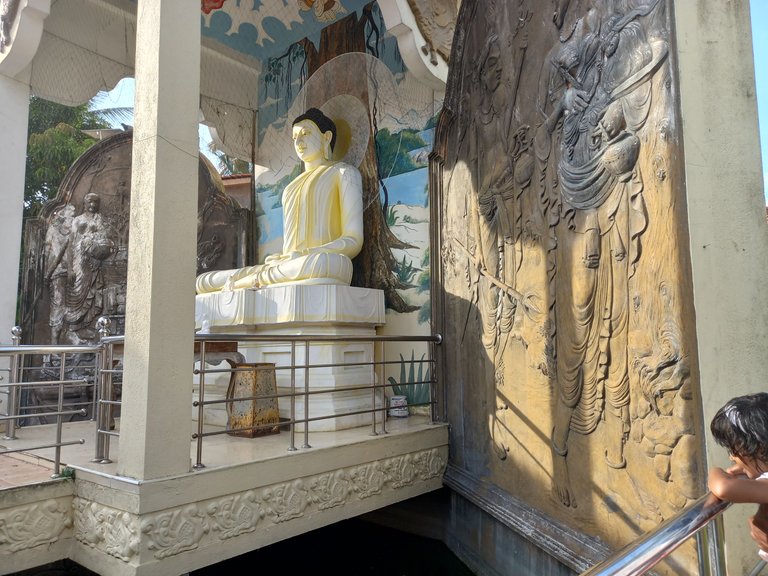
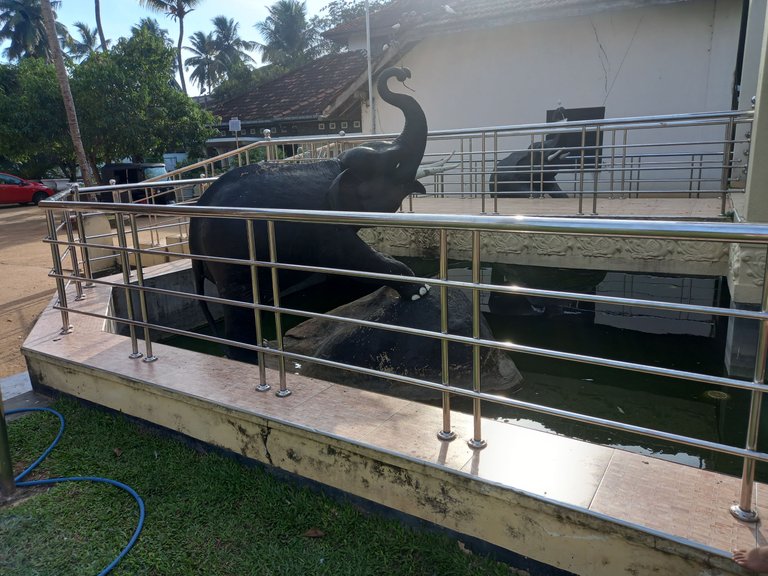
Carved designs can also be seen on the walls in front of the entrance to the Buddha statue. In addition, two elephant sculptures have been built on both sides of the pond.
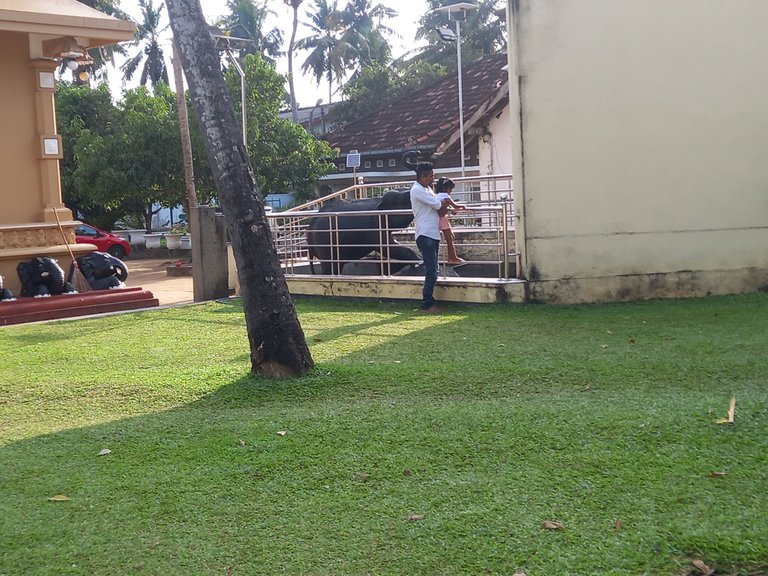
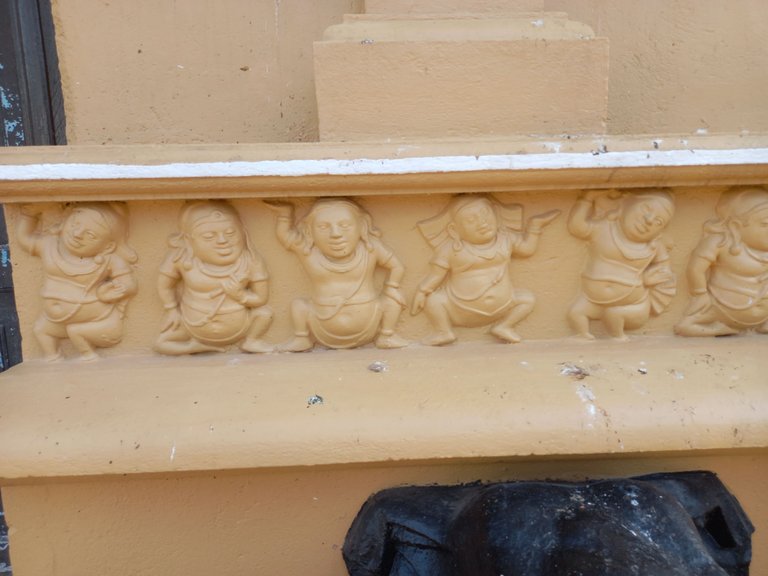 | 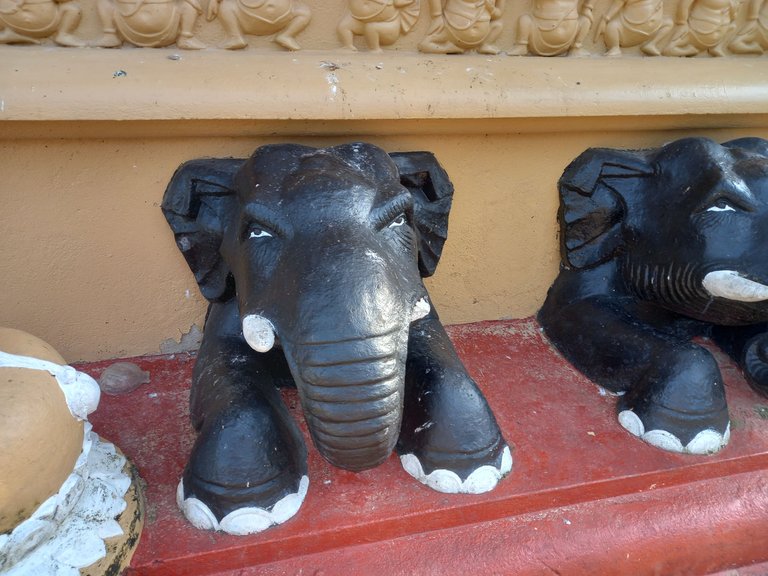 |
|---|---|
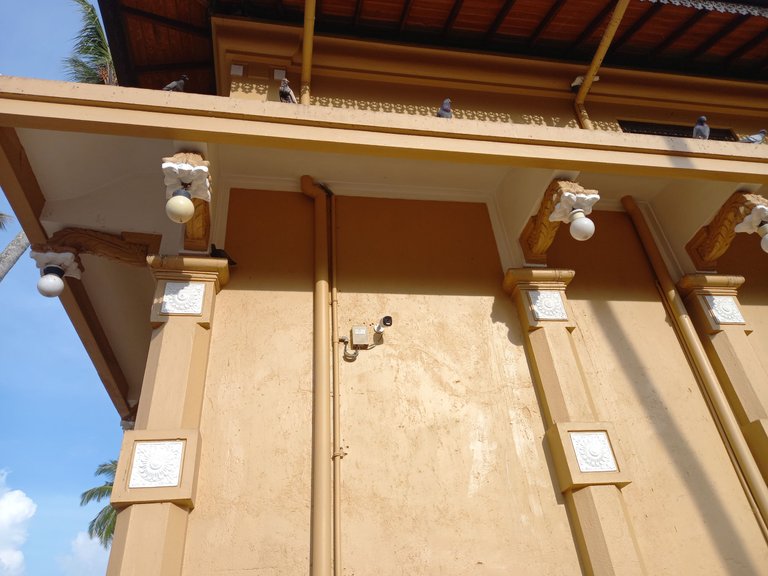 | 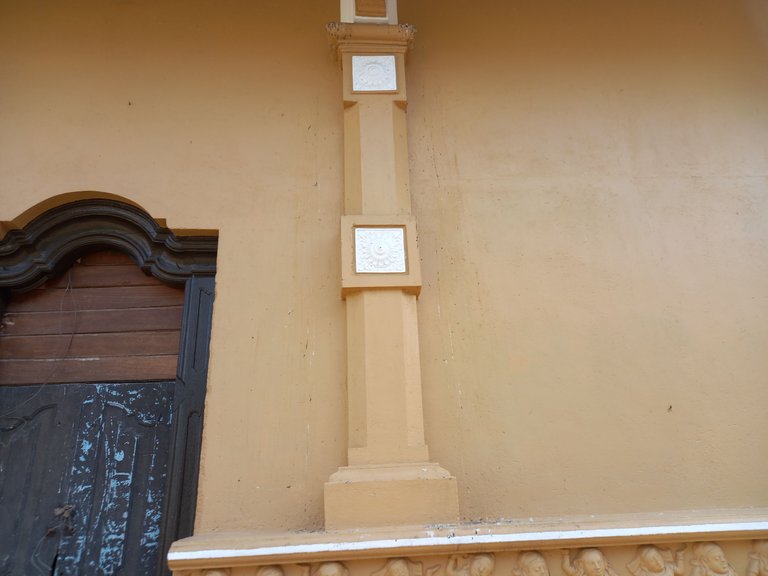 |
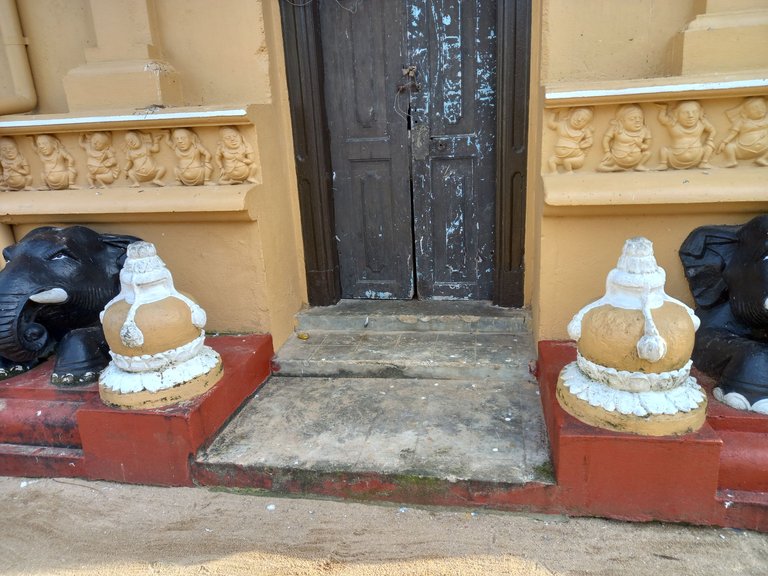
Behind the Buddha House are sculptures of two pots full of palm flowers. It reflects prosperity. Different elements could be seen on three doors of the same building, with figures of gods in front, lions in the middle, and two pots full of palm flowers at the back.
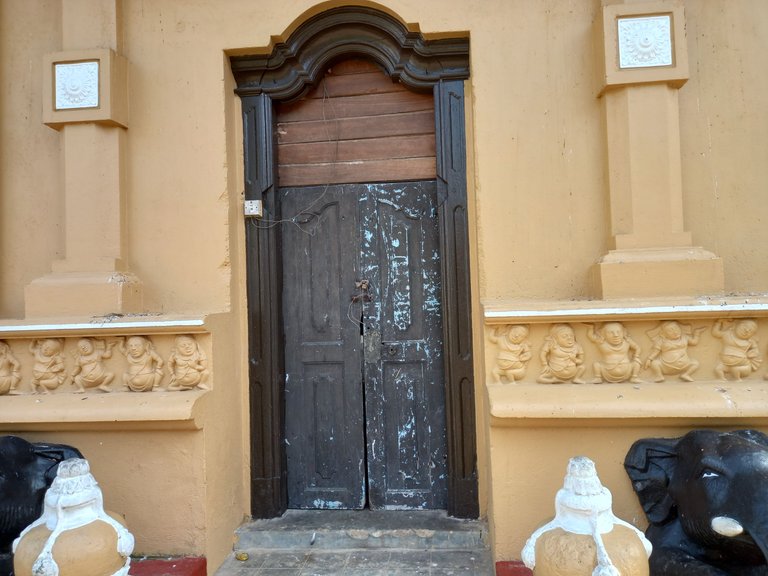
The frame of the back door was the same shape as the front door. It is locked so that no one can enter. The upper part of the door was made of strong wood, but the lower part did not look strong.
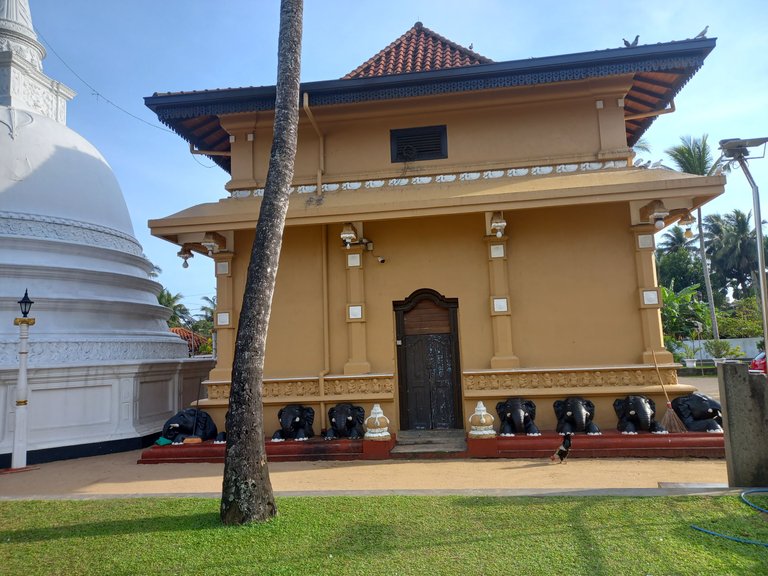 | 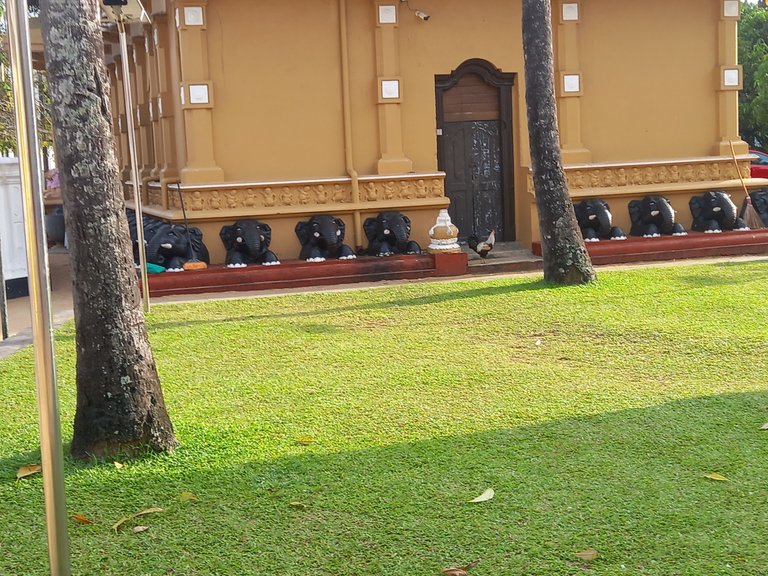 |
|---|
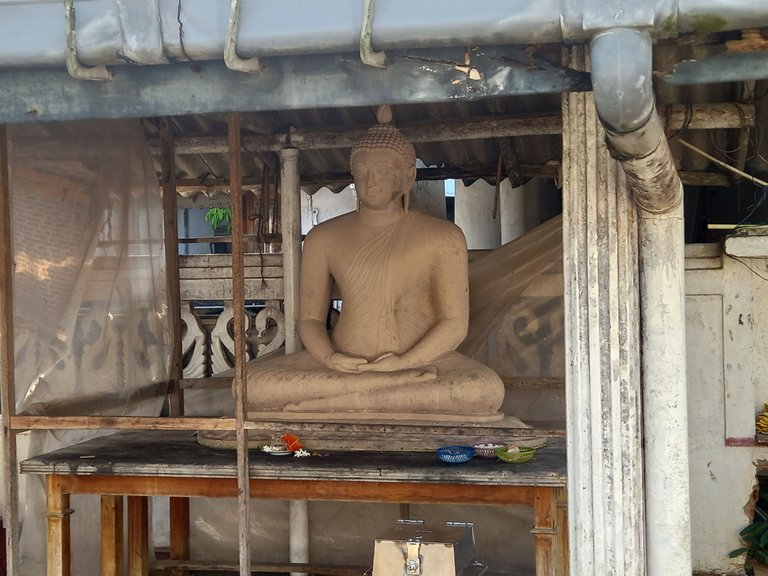
When going towards the Bodhi tree, another Buddha statue with a different color was found. It is also a statue in meditative posture. The statue was temporarily kept in this chamber to be moved to another place.
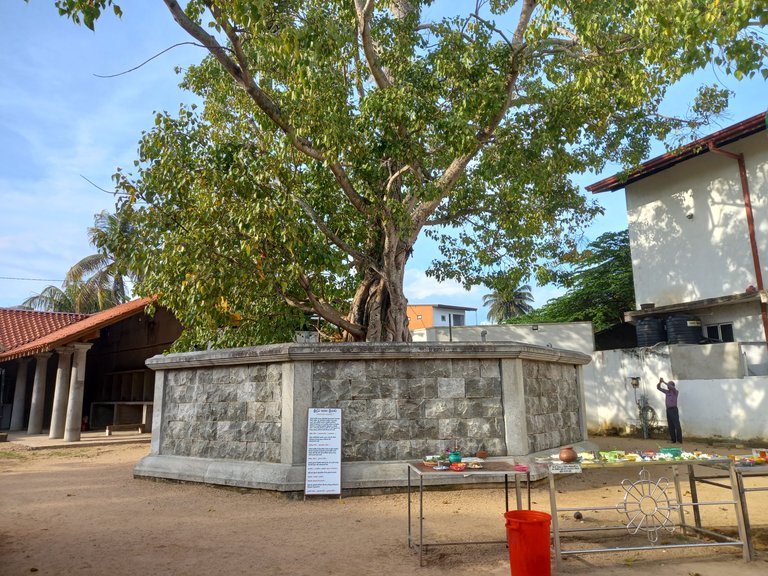
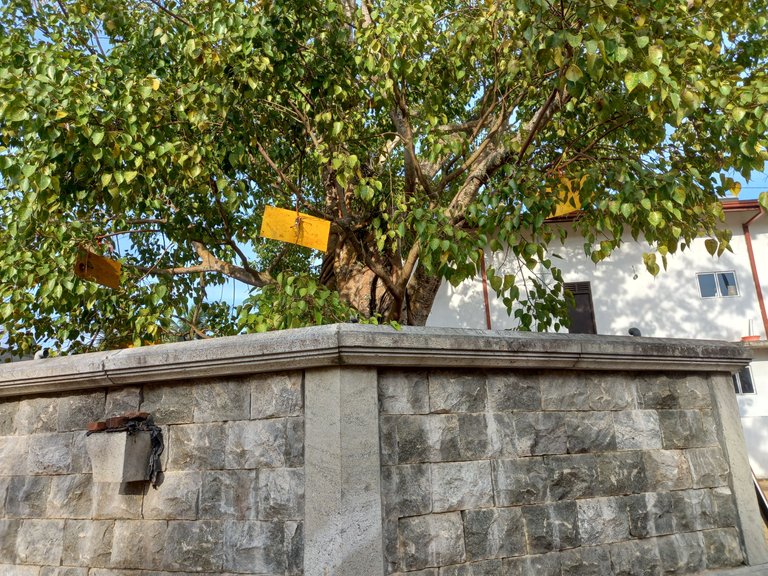
It is clear that the Bodhi tree is not old at first glance. There was no golden fence around it either. The wall is made like a foundation of stones, highlighting an attractive shape. Because it is considered as a place of miracles, holes were made for the Bo tree to bathe in water.

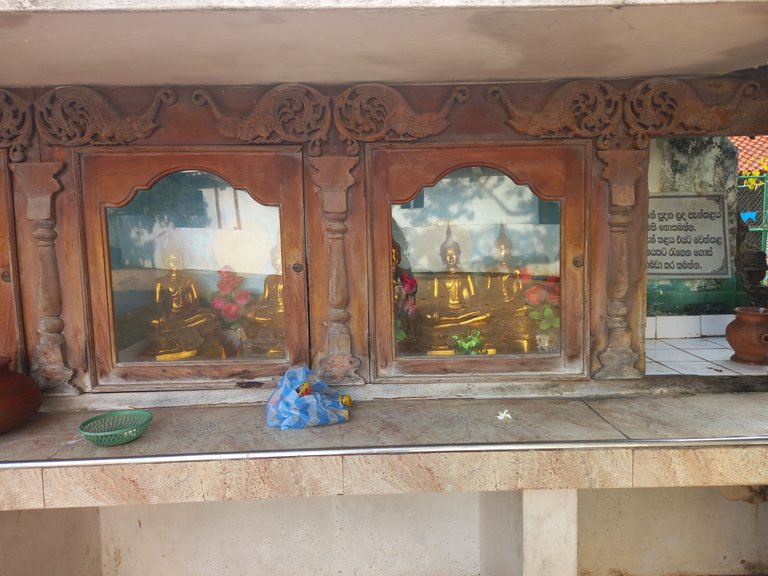
On the side of the Bodhi tree, we could see a thin elongated chamber with several golden statues of the Buddha placed side by side. Built on tiles, some small parts like a door have been created with wood carvings.
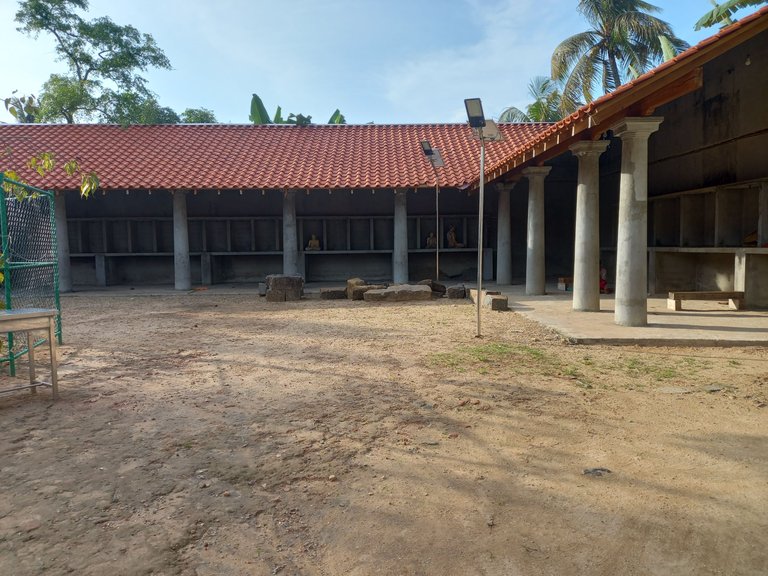
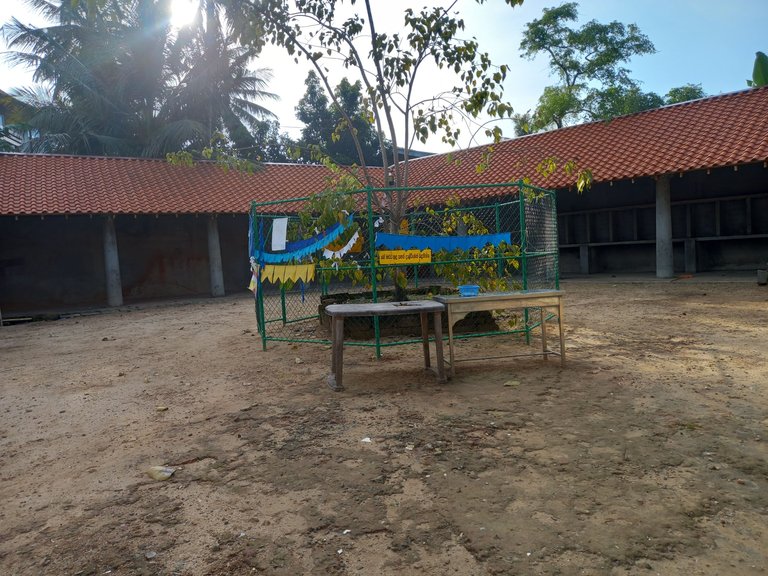
A new building with a modern tiled roof is being constructed on the other side of the Bodhi tree. It seems that it is a shrine to be built by collecting many Buddha statues. Several pillars have been made to support its roof which is still under construction. Their carvings can be impressive once complete. I will come back with impressive architectural designs.

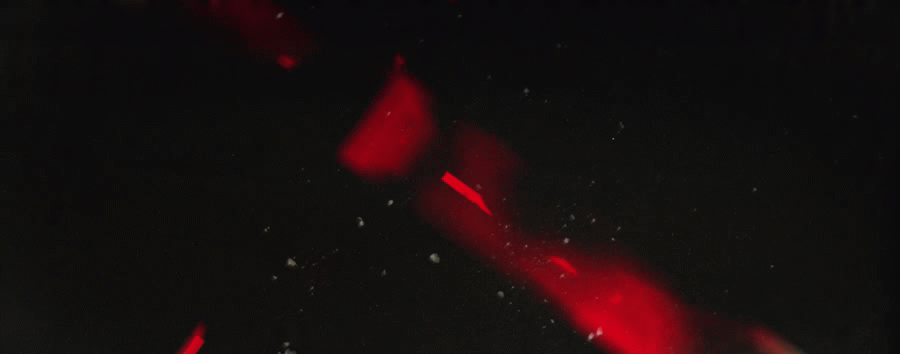
Thank you very much @brumest. Appreciate your support.
Congratulations, your post has been added to Pinmapple! 🎉🥳🍍
Did you know you have your own profile map?
And every post has their own map too!
Want to have your post on the map too?
https://twitter.com/1260211375881814016/status/1624762140019027968
The rewards earned on this comment will go directly to the people( @madushanka ) sharing the post on Twitter as long as they are registered with @poshtoken. Sign up at https://hiveposh.com.
Hiya, @lizanomadsoul here, just swinging by to let you know that this post made it into our Honorable Mentions in Daily Travel Digest #1788.
Your post has been manually curated by the @pinmapple team. If you like what we're doing, please drop by to check out all the rest of today's great posts and consider supporting other authors like yourself and us so we can keep the project going!
Become part of our travel community:
The Buddhist religion has very beautiful temples.
It is very nice to learn about different cultures from places so different from where I live. But full of great beauty.
Cheers.
Yeah. Sure Buddhist religion has so many different types of temple world wide like as other relisious shrines. This community allows us to learn different cultural things to everyone. So why I love to share my review to fellow Hivers. Thanks for the feedback.
!ALIVE
@jordy0827! You Are Alive so I just staked 0.1 $ALIVE to your account on behalf of @madushanka. (2/10)
The tip has been paid for by the We Are Alive Tribe through the earnings on @alive.chat, feel free to swing by our daily chat any time you want.

Thanks
Congratulations @madushanka! We are delighted to inform you that your outstanding publication was specially selected to be part of our Curated Content Catalog and was awarded RUNNER-UP in Architecture Anthology™ 15. More power!
Thank you for subscribing to Architecture+Design, an OCD incubated community on the Hive Blockchain.
Thanks very much for selected my blog to runner up.
You are most welcome dear @madushanka. Keep up the awesome work! 😀
Greetings @madushanka. I've certainly learned a lot about Sri Lankan Buddhist architecture thru your various posts. It's simply interesting to witness their tremendous attention to carvings and murals with plenty of symbolic meanings. I'd probably be overwhelmed by these intricate details as a new visitor to these temples. However, I'm also blown away by their exquisite beauty especially the valuable dedication it must have taken to produce these sacred masterpieces. Amazing indeed! 😊👍
Greetings @storiesoferne, Yes indeed the sacrifices made by ancient artists to create symbolic sacred artworks is amazing. They have managed to give a good meaning in every carving and painting. The artworks of Hindu religious shrines also have deep meanings, but I have not studied more about it, so I paid more attention to Buddhist shrines. Thanks for valuable feedback. Have a great week.
The cream and white tone brings a home feel to the temple that adds serenity to the place more than what it is mean to have.